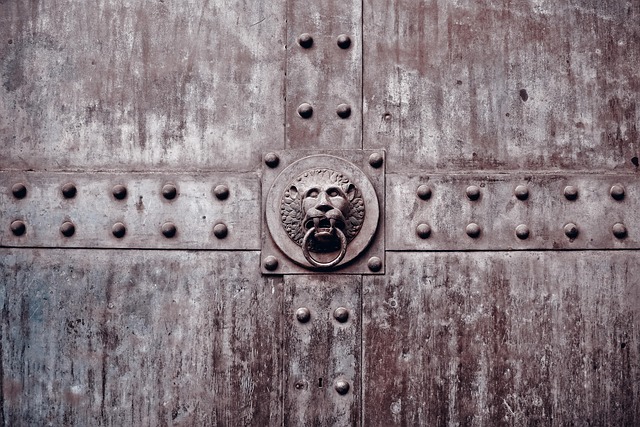Residential fire-rated doors are critical safety features designed to withstand high temperatures and slow the spread of fires, complying with building codes in areas like escape routes and kitchens. Regular maintenance by professionals is essential for ensuring their effectiveness and compliance with safety standards, addressing issues like misalignment, damaged seals, and worn hinges through inspections, cleaning, lubrication, and prompt replacement of parts. These doors play a vital role in protecting lives by providing time for evacuation during emergencies, making them an indispensable component of home fire safety strategies.
Fire doors play a vital role in residential safety, acting as a crucial barrier against the rapid spread of flames and smoke. This article delves into the essential practice of maintaining and inspecting these doors to ensure they remain effective and compliant. From understanding the purpose of residential fire-rated doors to identifying common issues and benefiting from professional services, this guide covers all aspects of fire door care, emphasizing the importance of regular checks for your home’s safety and compliance.
Understanding Residential Fire-Rated Doors: Their Role and Importance
Residential fire-rated doors play a crucial role in ensuring the safety and security of homes. Designed to withstand intense heat and delay the spread of fire, these doors are an essential component of a comprehensive fire protection system. Their primary function is to provide a barrier that prevents fire from spreading between rooms or floors, giving residents critical time to evacuate safely.
Beyond their structural integrity, residential fire-rated doors also contribute to compliance with building codes and regulations. Many areas mandate the installation of such doors in specific situations, such as between living spaces and kitchens or near escape routes. Regular maintenance and inspection are vital to guarantee these doors remain effective. Proper care ensures they maintain their fire-resistant properties, locking mechanisms work seamlessly, and seals remain intact, thereby enhancing overall home safety.
Regular Maintenance Checks: What to Inspect and Why
Regular maintenance checks are an indispensable part of ensuring that residential fire-rated doors remain effective and compliant with safety standards. During these inspections, professionals should thoroughly examine various components to identify any signs of damage, wear, or malfunction. This includes checking door hinges, seals, and latches for proper alignment and functionality. Any deviations from the manufacturer’s specifications could compromise the integrity of the door during a fire emergency.
Additionally, inspecting the door’s paint job and surface conditions is crucial. Chips, cracks, or blistering might indicate structural weakness or degradation, requiring immediate attention. Regular maintenance also involves testing the door’s insulation and fire-resistant properties through specific diagnostic methods. This ensures that the doors maintain their rating and provide the necessary protection in case of a fire, ultimately safeguarding residents and property.
Common Issues with Fire Doors and How to Prevent Them
Fire doors, while designed to provide critical protection during emergencies, can develop issues over time that compromise their effectiveness and compliance with safety standards. Common problems include poor fit or misalignment, damaged seals or gaskets, rust or corrosion on hardware, and worn-out hinges. These issues can arise due to age, exposure to harsh conditions, or inadequate installation.
Preventing these issues requires regular maintenance and inspection. For residential fire-rated doors, check for any signs of wear or damage during routine inspections. Ensure proper alignment and adjustments as needed. Keep seals and gaskets in good condition by regularly cleaning them and replacing worn-out parts promptly. Regular lubrication of hinges can prevent rust and ensure smooth operation. Additionally, adhere to manufacturer guidelines for maintenance intervals and perform professional inspections to guarantee compliance with fire safety regulations.
Inspection Procedures for Compliance and Safety
Regular inspection procedures are paramount in ensuring that residential fire-rated doors maintain their effectiveness and compliance with safety standards. These inspections should cover several critical aspects, starting with a visual assessment to identify any signs of damage, wear, or degradation in the door’s structure and hardware. This includes checking for broken hinges, loose panels, or damaged seals, which could compromise the door’s integrity during an emergency.
Additionally, testing the door’s closing mechanism and latches is crucial. The inspection should verify that the door closes securely and automatically re-latches upon closure, ensuring it meets the required fire resistance ratings. It’s also essential to check the functionality of any smoke or heat sensors attached to the door, as these play a vital role in early warning systems during fires. Regular maintenance and prompt repairs or replacements for any identified issues are key to keeping residential fire doors reliable and safe.
The Benefits of Professional Fire Door Services
Maintaining and regularly inspecting residential fire-rated doors is paramount for ensuring safety and compliance. By understanding the critical role these doors play in protecting homes and lives, homeowners can implement effective maintenance routines. Regular checks help identify common issues early on, preventing potential hazards and ensuring these doors remain reliable lifelines during emergencies. For comprehensive guidance and peace of mind, professional fire door services offer invaluable expertise, ensuring your residential fire-rated doors are always up to standard.
